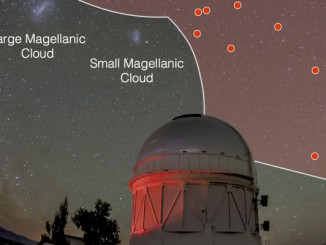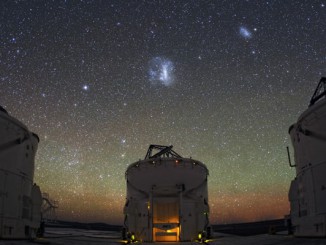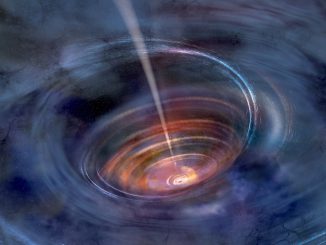
Where did the CMZ come from? No place else in the Milky Way is remotely like it (although there may be analogues in other galaxies). How does it retain its structure as its molecular gas moves, and how do those rapid motions determine its evolution? One difficulty facing astronomers is that there is so much obscuring dust between us and the CMZ that visible light is extinguished by factors of over a trillion. Infrared, radio, and some X-ray radiation can penetrate the veil, however, and they have allowed astronomers to develop the picture just outlined.
CfA astronomers Cara Battersby, Dan Walker, and Qizhou Zhang, with their team of colleagues, used the Australian Mopra radio telescope to study the three molecules HNCO, N2H+, and HNC in the CMZ. These particular molecules were selected because they do a good job of tracing the wide range of conditions thought to be present in the CMZ, from shocked gas to quiescent material, and also because they suffer only minimally from cluttering and extinction effects that complicate more abundant species like carbon monoxide. The scientists developed a new computer code to analyse efficiently the large amounts of data they had.
The astronomers find, consistent with previous results, that the CMZ is not centred on the black hole, but (for reasons that are not understood) is offset; they also confirm that the gas motions throughout are supersonic. They identify two large-scale flows across the region, and suggest they represent one coherent (or at most two independent) streams of material, perhaps even spiral-like arms. They also analyse the gas in several previously identified zones of the CMZ, finding that one shell-like region thought to be the result of supernova explosions may instead be several regions that are physically unrelated, and that a giant cloud thought to be independent is actually an extension of the large-scale flows.
The scientists note that this work is a first step in unravelling an intrinsically complex galactic environment, and that pending research will trace the gas motions to larger distances and try to model the CMZ gas motions with computer simulations.



